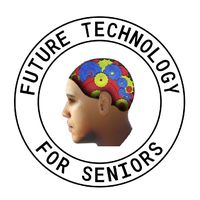Turning Stem Cells into Organoids
Summary
Organoids are one of the most significant scientific advances of the last ten years. Using stem cells from the patient’s skin, scientists can grow organoids in a dish into almost any organ’s cells. These include the brain, heart, liver, kidney and lungs.
They can then experiment with ways to fix defects as the patient’s organoids exhibit these defects. Eventually, a complete organ may be grown for transplants with no rejection. Also a complete brain, but there are many ethical issues. It is early days but there is potential for curing most disabilities, amongst others schizophrenia, autism, Parkinson’s, dementia, multiple sclerosis and epilepsy.
In addition, using organoids in computers to create general intelligence (GI), like humans, as opposed to AI today which is basically for dedicated tasks (NI – Narrow Intelligence)
The short video below by Paola Arlotta, the lead researcher at Harvard in this field, demonstrates the excitement and potential.
The above video is short. A more detailed explanation can be seen here. At times the interviewer is struggling, but what Paola says is enthralling!
The Human Brain
A previous blog explained the mind boggling complexity of the human brain. Numbers such as 850,000 Km of fibres called axons, 85 Bn neurons and up to 17 Trn synapses a second. Most people are unaware just how big a trillion (Trn) is. It is the number of seconds in 32,000 years!
Being able to grow parts of a human brain is why scientists are excited, but there is a long way to go.
Brain defects are the leading cause of disability and the second leading cause of death worldwide. Fixing them is where the research is heading in leaps and bounds.
How Do Stem Cells Become Organoids?
There are two ways to turn stem cells in a dish into brain cells or any other organ parts:
- CRISPR gene editing (see previous blog)
- Using a combination of chemicals containing the right molecules.
Both activate genes that grow neurons or other organ characteristics. The most accessible stem cells are obtained from the patient’s largest organ, their skin.
Types of Organoids

Treating Brain Disabilities
Brain organoids mimic parts of the human brain and can be tested experimentally in ways that a person’s brain cannot. For instance, medication or gene modification can be tailored to the patient’s particular type of defect.
A recent study by UC San Diego showed gene therapy reversing the effects of autism in human brain organoids from a patient. MIT and Harvard teams found in each organoid, the same cell types developed in the same order and had the same genes as cells in a developing human embryo.
Organoids can be grown in large numbers in the lab from just a small quantity of stem cells.
Organoid Based Computers
Johns Hopkins University envisions ‘biocomputers’ that would use networks of brain organoids that could change the future of computing. See Frontiers in Science.
Computing and artificial intelligence, even the world’s best supercomputers are reaching a ceiling that may be overcome by biocomputing. Even quantum computers? Another blog.
Comments
You can comment under ‘Leave A Reply’ below. Your thoughts really help identify gaps in these blogs and are encouraged.
References
- MIT and Havard University Brain Organoids
- Harvard University Organoid Explanation
- Organoid Computing
- Perplexity.AI – Skin Stem Cell Harvesting
- How Brain Components and Activity are Measured

4 Responses
Again another fascinating Blog Campbell.
Whilst the article stakes that it’s all still a long way off it didn’t give any incite as to when this may be possibly be available or at what stage they are at with the science. I know it’s highly unlikely in my lifetime however one of the benefits of COVID was the rapid development in medical science that it caused. Hopefully our near descendants will have this available to them in the near future.
Best regards and thanks once again.
Peter
Thanks for commenting.
While I didn’t mention this other than saying that the science is progressing in leaps and bounds, the head researcher at Harvard in the longer video I referred to thinks some major progress will be made in the next 5 years. Also, the blog mentions that one patient has already been cured of autism.
Remote targeted treatment is the key.
Thanks for that Campbell
That discussion about the brain development being controlled by the speed of development, raises fascinating prospects. Obviously the chemical environment in the womb would be entirely different to that of the baby once born. Brain still being build post-natal, until we are about 25.
It could well be that IQ etc depend more on the mother and the development period of the brain than just genetic DNA differences.
Also the order of brain component development will have different phases (choreography), and the length of these phases must make a difference.
She is very good. [Why haven’t I seen this before? It was recorded 3 years ago !!!]
Stewart
For some reason, your email was in my spam folder but thanks anyway. I have given the spam decider a severe talking to!
Your theory about the developmental period in the mother’s womb is valid and her behaviour, drug and alcohol intake, for instance, will have a bearing on IQ.
The key about the organoid is that no matter when it is grown, it exhibits the same characteristics and defects as the patient at that time. it is that or those defects that can direct the tailored medication.
Campbell